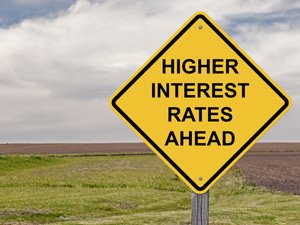Are Interest Rates Going Up in June 2017?
This article was originally published on this site
Thanks to the unemployment rate reaching a 10-year low in April, it’s likely that interest rates are going up in June 2017.
According to CME Group’s FedWatch Tool, a gauge of the market’s expectations, there’s now a 78.5% chance the Fed will raise interest rates at the June 13-14 FOMC meeting.

The Fed wants to raise rates at the June FOMC meeting so it can stay on track with the goal it set in December 2016. At the time, officials said they wanted a total of three interest rate hikes in 2017. Interest rates were raised in March, which means we need two more rate hikes before the end of the year.
There are only four FOMC meetings after June, so the Fed is running out of opportunities…
| Meeting | Month | Dates |
| FOMC | June | 13-14 |
| FOMC | July | 25-26 |
| FOMC | September | 19-20 |
| FOMC | October/November | 31-1 |
| FOMC | December | 12-13 |
While a rate hike looks likely, there’s no certainty a June rate hike will happen…
Why a Fed Rate Hike in June Is in Doubt
On May 19, St. Louis Federal Reserve Chief James Bullard raised doubts about a rate hike in June.
According to USA Today, he said two more rate hikes may be “overly aggressive.”
This was an unexpected announcement, because Bullard is a notable “hawk,” pressing the Fed to raise rates all the way back in September 2015.
Why the change?
Bullard believes the economy is growing too slow. In Q1 2017, GDP growth was 0.7%, the slowest growth pace in three years.
And while the unemployment rate is low, Bullard says job growth isn’t as robust as it should be.
According to USA Today, average monthly job growth in 2015 was 226,000. So far in 2017, it’s 185,000.
Bullard makes compelling points, but it’s up to the entire FOMC committee to decide on a rate hike. And because the Fed still appears on track to raise rates, we wanted to make sure Money Morning readers are prepared.
From auto loans to investments, here’s how a potential June 2017 interest rate hike will impact your money and your investments…
How Interest Rates Will Affect Your Money in 2017
After an interest rate hike, the U.S. dollar becomes stronger. With fewer people able to pay back loans at higher interest rates, money becomes scarcer. You see, more money being easily available (like it is in times of low rates) makes it less valuable.
But with less money in circulation (during times of climbing rates), it can become more valuable.
This makes importing goods from foreign countries cheaper. Theoretically, those savings can be passed on to the U.S. consumer, which could encourage more consumer spending.
However, there are also negative consequences to a strong dollar. When the dollar is strong, it costs more for foreign companies to import U.S. goods.
According to a Duke University/CFO Magazine Global Business Outlook survey in 2015, two out of three companies considered big U.S. exporters (those with one-fourth of their total sales overseas) said a stronger U.S. dollar would have a negative impact on their businesses.
Higher interest rates also have a major bearish impact on gold and silver prices.
Gold and silver are viewed as portfolio protection against volatility in the stock market. But because gold and silver don’t offer dividends or interest appreciation, savings accounts and bonds are more appealing investments when interest rates are raised.
Investors would rather have their money earn them interest, so the demand for gold and silver can drop. When that demand drops, precious metal prices fall.
The stronger dollar also impacts precious metal prices because gold and silver are priced in U.S. dollars. It costs foreign countries more to purchase gold when the dollar is stronger.
Foreign investors are less likely to buy gold at higher prices.
Outside of the dollar strength and precious metals, rising interest rates also have a major impact on auto loans, mortgage rates, credit cards, and the travel industry.
- Auto Loans: Because of the stock market crash of 2008, auto companies have relied on loans with low rates to attract customers. In February 2009, light vehicle sales hit 9 million. By November 2015, those sales climbed to 18 million annually. Car loans can average between 2% to 3% now, but car loans were 8% before the crisis, according to CNBC.
- Mortgage Rates: An interest rate hike won’t affect you if you have a fixed mortgage. You are locked in at one rate, no matter what the Fed does. But if you have a mortgage with adjustable rates, you will start to see higher bills monthly or annually. Buying a house before Fed meetings can help you potentially lock in a lower interest rate before the end of 2017.
- Credit Cards: Most credit cards have variable interest rates, which means your payments will go up quickly if the Fed raises interest rates. And if the interest rate increases, your minimum payment will also increase. According to Forbes, most major credit companies will take a percentage of your principal and add the interest accrued during that period to create a new minimum payment.
- Travel Industry: A Fed rate hike can mean cheaper travel expenses for Americans visiting foreign countries because the dollar is stronger. European central banks’ and the Bank of Japan’s (BoJ) easing programs for their national currencies also helps you buy more for less.


